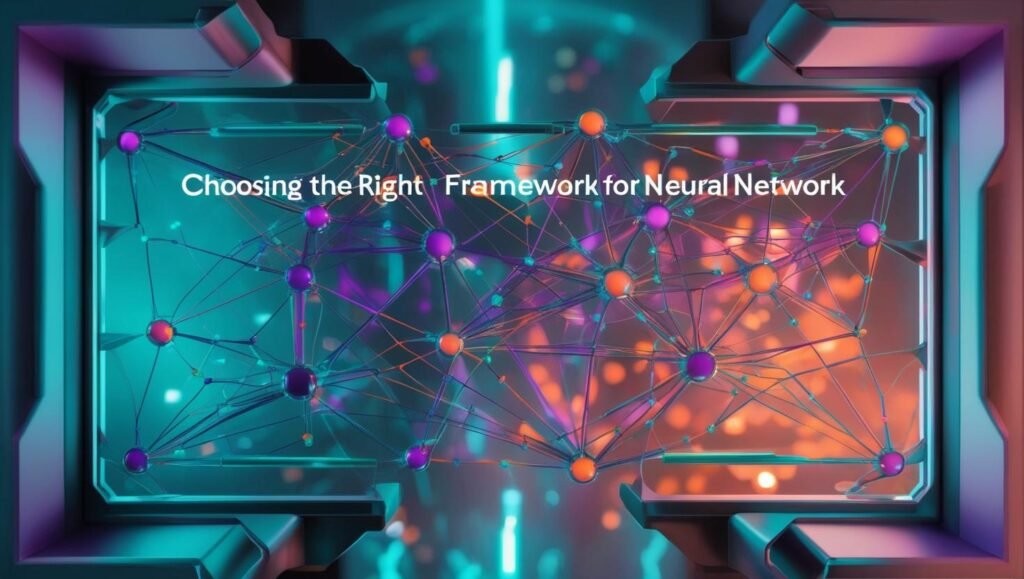Intro to Neural Networks: A Step-by-Step Guide to Build Your First AI Model

In the rapidly evolving world of technology, neural networks stand as a cornerstone of artificial intelligence, transforming how machines understand, learn, and interact with data. If you’ve ever wondered how your smartphone recognizes your voice or how e-commerce platforms recommend products tailored just for you, the power of neural networks is behind these innovations.
This step-by-step guide is designed for newcomers eager to dive into the fascinating realm of AI. Whether you’re a curious beginner or someone with a touch of coding experience, building your first AI model can be an exhilarating journey. We’ll demystify the core concepts, walk you through practical examples, and equip you with the knowledge to create a simple yet effective neural network.
Prepare to unlock the secrets of AI and transform your ideas into reality with this comprehensive introduction—your gateway to the captivating world of neural networks!
Understanding Neural Networks: The Basics
Neural networks, inspired by the biological neural networks of the human brain, are a set of algorithms designed to recognize patterns. They interpret sensory data through a kind of machine perception, labeling, and clustering of raw input.
These networks consist of layers of interconnected nodes, or neurons, each capable of processing data and passing it to subsequent layers. At the foundation, neural networks leverage the power of mathematics and computational algorithms to transform input data into meaningful outputs.
At their core, neural networks operate through a system of weights and biases, adjusting these parameters to minimize error and improve accuracy. The fundamental unit of a neural network is the neuron, which processes inputs through an activation function and forwards the result to the next layer.
A neural network typically comprises three main layers: the input layer, which receives the initial data; hidden layers, which process this data through complex computations; and the output layer, which delivers the final result. Understanding how these layers interact is crucial to grasping the mechanics of neural networks.
Neural networks can be classified into various types, such as feedforward neural networks, convolutional neural networks (CNNs), and recurrent neural networks (RNNs). Feedforward networks are the simplest form, where data moves in one direction from input to output.
CNNs are specialized for processing grid-like data, such as images, while RNNs are designed for sequential data, making them suitable for tasks like speech recognition. Each type of neural network has specific applications and advantages, making them versatile tools in the realm of AI.
The Importance of Neural Networks in AI

Neural networks have revolutionized the field of artificial intelligence, enabling machines to perform tasks that were once thought to be exclusively within the domain of human intelligence. They excel in handling large datasets, uncovering patterns, and making predictions with remarkable accuracy.
This capability has made them indispensable in various industries, from healthcare and finance to entertainment and transportation. The importance of neural networks in AI cannot be overstated, as they form the backbone of many modern technological advancements.
One of the most significant contributions of neural networks is their ability to learn from data. Unlike traditional programming, where explicit instructions are required for each task, neural networks can automatically identify relevant features and adapt their parameters based on training data.
This learning capability is particularly valuable in scenarios where data is abundant but structured knowledge is scarce. As a result, neural networks have become the driving force behind innovations like autonomous vehicles, personalized medicine, and advanced robotics.
Moreover, neural networks are integral to the development of intelligent systems that can interact naturally with humans. From virtual assistants like Siri and Alexa to sophisticated recommendation engines on platforms like Netflix and Amazon, neural networks enable machines to understand and respond to human needs.
This interaction is facilitated by the network’s ability to process and analyze vast amounts of data, providing insights and solutions that enhance user experiences. As AI continues to evolve, the role of neural networks will only become more pivotal, shaping the future of technology and society.
Key Terminology in Neural Networks
To navigate the complex world of neural networks, it’s essential to familiarize yourself with key terminology that defines their structure and function. Understanding these terms will help you grasp the underlying concepts and communicate effectively within the AI community. Let’s explore some of the most important terms you will encounter.
Neuron: The basic unit of a neural network, a neuron receives input, processes it through an activation function, and passes the result to the next layer. Neurons are analogous to the nerve cells in the human brain, forming the building blocks of the network.
Activation Function: This function determines whether a neuron should be activated or not. Common activation functions include Sigmoid, Tanh, and ReLU (Rectified Linear Unit). Each function has its own characteristics and applications, influencing how the network learns and processes data.
Weights and Biases: Weights are parameters that adjust the input data as it passes through the network, while biases provide additional flexibility in the learning process. Together, weights and biases are optimized during training to minimize error and improve the network’s performance.
Layers: Neural networks consist of multiple layers, including input, hidden, and output layers. Each layer has a specific role in processing data, with hidden layers performing complex computations and the output layer delivering the final result.
Forward Propagation: The process of moving input data through the network from the input layer to the output layer. During forward propagation, each neuron’s output is calculated based on the inputs and weights, leading to the final prediction.
Backpropagation: A crucial learning algorithm, backpropagation adjusts the weights and biases of the network by propagating errors backward from the output layer to the input layer. This process helps minimize the difference between predicted and actual outputs, improving the network’s accuracy.
Components of a Neural Network
A neural network is composed of several key components, each playing a vital role in its operation. Understanding these components will provide a solid foundation for building and optimizing your own neural network. Let’s delve into the essential elements that make up a neural network.
Input Layer
The input layer is the first layer of a neural network, responsible for receiving the initial data. This data can be in various forms, such as images, text, or numerical values. Each neuron in the input layer represents a feature of the data, passing it to the next layer for further processing. The input layer sets the stage for the network’s subsequent computations, ensuring that the data is appropriately formatted for analysis.
Hidden Layers
Hidden layers are the core processing units of a neural network, where complex computations take place. These layers consist of neurons that apply activation functions to the input data, transforming it into meaningful patterns. The number and structure of hidden layers can vary depending on the network’s design and the complexity of the task.
Deep neural networks, which have multiple hidden layers, are capable of capturing intricate patterns and relationships within the data, making them suitable for advanced applications.
Output Layer
The output layer is the final layer of a neural network, delivering the network’s prediction or classification. The number of neurons in the output layer corresponds to the number of possible outcomes.
For example, in a binary classification task, the output layer might have two neurons, each representing a different class. The output layer’s activations provide the network’s final response, which can be further analyzed or used for decision-making.
Weights and Biases
Weights and biases are crucial parameters that influence how data is processed within the network. Weights adjust the significance of each input, while biases provide additional flexibility by shifting the activation function’s output.
During training, these parameters are optimized to minimize error and enhance the network’s performance. Understanding the role of weights and biases is essential for fine-tuning your neural network and achieving optimal results.
Activation Functions
Activation functions determine whether a neuron should be activated, influencing the network’s learning and decision-making processes. Common activation functions include Sigmoid, Tanh, and ReLU, each with unique characteristics and applications.
The choice of activation function can significantly impact the network’s performance and ability to capture complex patterns. Familiarizing yourself with different activation functions will enable you to design effective neural networks tailored to specific tasks.
Choosing the Right Framework for Your Neural Network

Selecting the appropriate framework for building your neural network is a critical step in your AI journey. The right framework can simplify the development process, provide powerful tools, and enhance the efficiency of your model. Several popular frameworks are available, each with its own strengths and features. In this section, we’ll explore some of the most widely used frameworks and help you choose the best one for your needs.
TensorFlow
Developed by Google, TensorFlow is one of the most popular frameworks for building neural networks. It offers a comprehensive suite of tools for designing, training, and deploying AI models.
TensorFlow’s flexibility and scalability make it suitable for a wide range of applications, from simple experiments to large-scale production systems. Additionally, TensorFlow’s extensive documentation and community support provide valuable resources for beginners and experienced developers alike.
PyTorch
PyTorch, developed by Facebook’s AI Research lab, is another leading framework for neural network development. Known for its dynamic computation graph and intuitive interface, PyTorch is favored by researchers and developers for its ease of use and flexibility.
The framework supports a wide array of tasks, including computer vision, natural language processing, and reinforcement learning. PyTorch’s strong community and extensive libraries make it an excellent choice for both experimental projects and production applications.
Keras
Keras is a high-level neural network API that runs on top of TensorFlow, making it a user-friendly option for beginners. Keras simplifies the process of building and training neural networks, offering a straightforward interface and modular design.
With Keras, you can quickly prototype and test your models without delving into the complexities of lower-level frameworks. Its focus on simplicity and ease of use makes Keras an ideal starting point for newcomers to AI and deep learning.
Other Frameworks
Several other frameworks, such as Caffe, MXNet, and Theano, also offer robust tools for neural network development. Each framework has unique features and advantages, catering to different needs and preferences.
Exploring these alternatives can provide additional insights and options for building your AI model. Ultimately, the choice of framework will depend on your specific requirements, experience level, and project goals.
Step-by-Step Guide to Building Your First Neural Network
Embarking on the journey to build your first neural network can be both exciting and daunting. To ease the process, we’ll provide a step-by-step guide that covers the essential stages of development, from data preparation to model evaluation. Follow these steps to create a simple yet effective neural network and unlock the potential of AI.
Step 1: Data Collection and Preprocessing
The first step in building a neural network is to collect and preprocess your data. High-quality, well-prepared data is crucial for training an accurate model. Start by gathering relevant datasets, which can be sourced from public repositories, research papers, or your own collections.
Once you have the data, clean and preprocess it to ensure consistency and remove any noise or irrelevant information. Common preprocessing techniques include normalization, scaling, and encoding categorical variables.
Step 2: Define the Network Architecture
Next, define the architecture of your neural network. This involves specifying the number of layers, the number of neurons in each layer, and the activation functions. Begin with a simple architecture, such as a feedforward network with one or two hidden layers.
As you gain experience, you can experiment with more complex structures, including convolutional or recurrent networks. The choice of architecture will depend on the nature of your data and the task you aim to accomplish.
Step 3: Initialize Weights and Biases
Initializing the weights and biases is a crucial step in setting up your neural network. Proper initialization can facilitate faster convergence and improve the model’s performance. Common initialization methods include random initialization, He initialization, and Xavier initialization. Experiment with different techniques to find the optimal approach for your network.
Step 4: Forward Propagation
With the network architecture in place, perform forward propagation to calculate the output based on the input data. This involves passing the data through each layer, applying activation functions, and computing the final prediction. Forward propagation helps you understand how the network processes information and generates results.
Step 5: Compute Loss and Backpropagation
Compute the loss, which measures the difference between the predicted and actual outputs. Common loss functions include Mean Squared Error (MSE) for regression tasks and Cross-Entropy Loss for classification tasks. Once the loss is calculated, perform backpropagation to adjust the weights and biases, minimizing the error and improving the network’s accuracy. Backpropagation involves propagating the error backward through the network, updating the parameters at each step.
Step 6: Train the Network
Training the network involves iterating through the forward propagation and backpropagation steps multiple times, adjusting the parameters to minimize the loss. Use an optimization algorithm, such as Gradient Descent, Adam, or RMSprop, to update the weights and biases efficiently. Monitor the network’s performance during training, using validation data to assess its accuracy and prevent overfitting.
Step 7: Evaluate the Model
Once the network is trained, evaluate its performance using test data. Assess metrics like accuracy, precision, recall, and F1-score to determine how well the model generalizes to new data. Fine-tune the network by adjusting hyperparameters, such as learning rate and batch size, to enhance its performance.
Step 8: Deploy and Monitor
Finally, deploy your neural network and monitor its performance in a real-world environment. Continuously observe the model’s outputs, retrain it with new data, and make adjustments to ensure it remains accurate and reliable.
Training Your Neural Network: Techniques and Tips

Training a neural network effectively requires a combination of techniques and best practices. In this section, we’ll explore various strategies to optimize your network’s performance, improve accuracy, and prevent common pitfalls. These tips will help you navigate the complexities of neural network training and achieve successful outcomes.
Data Augmentation
Data augmentation involves generating additional training samples by applying transformations to existing data. Techniques like rotation, scaling, cropping, and flipping can enhance the diversity of your dataset, improving the network’s ability to generalize. Data augmentation is particularly useful in image processing tasks, where variations in input data can significantly impact performance.
Regularization
Regularization techniques aim to prevent overfitting, ensuring that your network performs well on new data. Common regularization methods include L1 and L2 regularization, dropout, and early stopping. L1 and L2 regularization add penalty terms to the loss function, discouraging large weights and promoting sparsity.
Dropout randomly disables neurons during training, preventing the network from relying too heavily on specific features. Early stopping halts training when the validation loss stops improving, avoiding overfitting and saving computational resources.
Hyperparameter Tuning
Hyperparameter tuning involves experimenting with different settings to optimize your network’s performance. Key hyperparameters include learning rate, batch size, number of epochs, and activation functions.
Use techniques like grid search, random search, and Bayesian optimization to systematically explore the hyperparameter space. Proper tuning can significantly enhance the accuracy and efficiency of your neural network.
Transfer Learning
Transfer learning leverages pre-trained models to improve the performance of your network on new tasks. By using a model trained on a related dataset, you can benefit from the knowledge and patterns already captured by the pre-trained network.
Fine-tuning the pre-trained model on your specific data can accelerate training and boost accuracy, especially when working with limited datasets. Transfer learning is widely used in applications like image classification, natural language processing, and speech recognition.
Batch Normalization
Batch normalization is a technique that standardizes the inputs to each layer, stabilizing the learning process and accelerating convergence. By normalizing the inputs, batch normalization reduces the internal covariate shift, allowing the network to learn more effectively. This technique can improve the performance of deep neural networks, making them more robust and efficient.
Common Challenges in Neural Network Development
Developing neural networks comes with its own set of challenges, which can hinder progress and affect performance. In this section, we’ll identify common obstacles and provide strategies to overcome them, ensuring a smoother development process and successful outcomes.
Data Quality and Quantity
High-quality, diverse data is crucial for training accurate neural networks. Insufficient or noisy data can lead to poor performance and unreliable results. To address this challenge, invest time in data collection and preprocessing, ensuring that your dataset is clean and representative of the task at hand. If data is limited, consider using data augmentation techniques or transfer learning to enhance your network’s capabilities.
Overfitting and Underfitting
Overfitting occurs when a neural network performs well on training data but poorly on new data, while underfitting indicates that the network fails to capture patterns in the training data. To prevent overfitting, use regularization techniques like dropout and early stopping, and monitor the network’s performance on validation data.
To avoid underfitting, ensure that your network architecture is sufficiently complex and experiment with different hyperparameters to improve its learning capacity.
Computational Resources
Training neural networks can be computationally intensive, requiring significant processing power and memory. Limited resources can slow down the development process and restrict experimentation. To mitigate this challenge, consider using cloud-based services or specialized hardware like GPUs and TPUs. Optimize your network architecture and training algorithms to reduce computational demands and enhance efficiency.
Hyperparameter Optimization
Selecting the right hyperparameters is crucial for neural network performance, but the process can be time-consuming and complex. To streamline hyperparameter optimization, use automated techniques like grid search, random search, or Bayesian optimization. Experiment with different settings systematically and leverage tools like TensorBoard to visualize and track your progress.
Debugging and Fine-Tuning
Identifying and resolving issues in neural network development can be challenging, especially when dealing with complex architectures and large datasets. To facilitate debugging, use visualization tools to inspect the network’s activations and gradients, and employ techniques like gradient checking to verify the correctness of your computations. Fine-tune your network by adjusting hyperparameters, experimenting with different architectures, and validating your results with comprehensive metrics.
Real-World Applications of Neural Networks

Neural networks have permeated various industries, driving innovation and transforming traditional practices. In this section, we’ll explore some of the most impactful real-world applications of neural networks, showcasing their versatility and potential to revolutionize different domains.
Healthcare
In healthcare, neural networks are used to analyze medical images, predict disease outcomes, and personalize treatments. For example, convolutional neural networks (CNNs) can identify abnormalities in X-rays and MRIs, assisting radiologists in diagnosing conditions like cancer and pneumonia. Recurrent neural networks (RNNs) can analyze patient data over time, predicting the progression of diseases and recommending interventions. Neural networks also enable the development of intelligent systems for drug discovery, genomics, and patient monitoring, enhancing the quality and efficiency of healthcare services.
Finance
The finance industry leverages neural networks for tasks like fraud detection, risk assessment, and algorithmic trading. By analyzing transaction data, neural networks can identify patterns indicative of fraudulent activities, protecting consumers and institutions. In risk assessment, neural networks evaluate the creditworthiness of individuals and businesses, informing lending decisions and insurance policies. Algorithmic trading systems use neural networks to predict market trends and execute trades, optimizing investment strategies and maximizing returns.
Entertainment
Neural networks play a significant role in the entertainment industry, powering recommendation engines, content creation, and interactive experiences. Streaming platforms like Netflix and Spotify use neural networks to analyze user preferences and recommend personalized content, improving engagement and satisfaction. In content creation, neural networks can generate music, art, and literature, pushing the boundaries of creativity and innovation. Additionally, neural networks enable the development of immersive experiences in gaming and virtual reality, enhancing realism
Conclusion :
Neural networks are the driving force behind today’s most exciting AI breakthroughs, from voice assistants to medical diagnostics.
By understanding their structure, components, and how to build a basic model, you’ve taken the first step into the world of artificial intelligence.
With continued practice and curiosity, you can start developing smarter systems, solving real-world problems, and contributing to the future of technology.
Keep experimenting, keep learning, your AI journey has just begun.
For the latest insights and updates, be sure to explore our AI Trends & News and stay ahead in the world of artificial intelligence.

Pingback: 7 Types of AI Transforming Our World Today – AI insights world
Pingback: Revolutionizing Finance: How AI is Transforming Investment Strategies and Risk Management – AI insights world
Pingback: Understanding Deep Learning - AI insights world
Pingback: Natural Language Processing : A Beginner's Guide - AI insights world
Pingback: Machine Learning: A Beginner-Friendly Guide - AI insights world
Pingback: The Best AI Music Transcription Tools - AI insights world
Pingback: Whisper AI Voice Guide - AI insights world